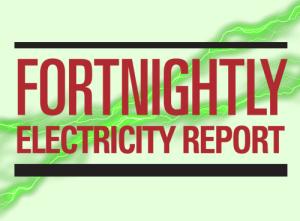We did this for thirty-seven different control areas and utility service territories. What is it that we did?

For each one of them, the PUF team plotted their load duration curves in April 2020 — based on their hourly megawatt-hour customer demand. And then, we compared the April 2020 load duration curves to their curves in April 2019, to check out the changes brought on by the coronavirus crisis.
The results were truly remarkable. In the most affected parts of the country, the load duration curves have significantly flattened, reflecting the present situation in which so many people are staying at home rather than spending weekdays nine-to-five at work places.
To give you a taste of the results, the load factor (average hourly demand divided by peak-hour demand) of Baltimore Gas and Electric went from 69.4 percent in April 2019 to 81.2 percent in April 2020. For PECO Energy, it went from 77.8 percent to 86.6 percent. For Allegheny Power, it went from 72.8 percent to 81.7 percent. For Pennsylvania Power and Light it went from 72.3 percent to 78.9 percent.
For Con Edison in New York City it went from 82.6 percent to 88.2 percent. For Duke Progress East it went from 64.1 percent to 69.2 percent. And, for Tennessee Valley Authority, it went from 71.9 percent to 76 percent.
Ok, here’s something else interesting that we did. On Monday of this week, May 11, grid-connected solar in California generated 12,214 megawatt-hours during the 2 p.m. hour Pacific Time. That was an impressive 51.5 percent of the total generation on California’s grid. Indeed, on last Monday, May 4, solar reached 12,271 megawatt-hours during the noon hour, for an even more impressive 59.2 percent of the state’s total generation.
More fascinating factoids about this. At the 2 p.m. hour Pacific Time on Monday, May 11, solar in California accounted for 44.3 percent of all the solar generation in the continental U.S. in that hour.
And, soon after that hour, California’s solar ramped down mighty fast requiring other generation sources to really ramp up. During the 6 p.m. hour, solar generation fell from 10,166 to 7,037 megawatt-hours. And in the next time period, the 7 p.m. hour, solar fell a whole lot, from 7,037 to 1,709 megawatt-hours.
Now, to our regular Fortnightly report on the U.S. grid generally. For the three-fortnight period of April 1 through May 12, when social distancing has been followed almost nationally:
- Electricity usage in the continental U.S. was down five and a half percent, as compared to April 1-May 12, 2019.
- Coal plant generation was down by one third (thirty-three percent).
- Coal plants produced just fifteen percent of the grid’s total generation, during these last six weeks. While zero-emission plants – wind, solar, nuclear and hydro – produced forty-five percent.
- The U.S. grid’s carbon dioxide emissions were down nineteen percent.
- The grid’s carbon intensity fell from eight-tenths of a pound of carbon dioxide per kilowatt-hour during April 1-May 12, 2019 to seven-tenths during April 1-May 12, 2020.


